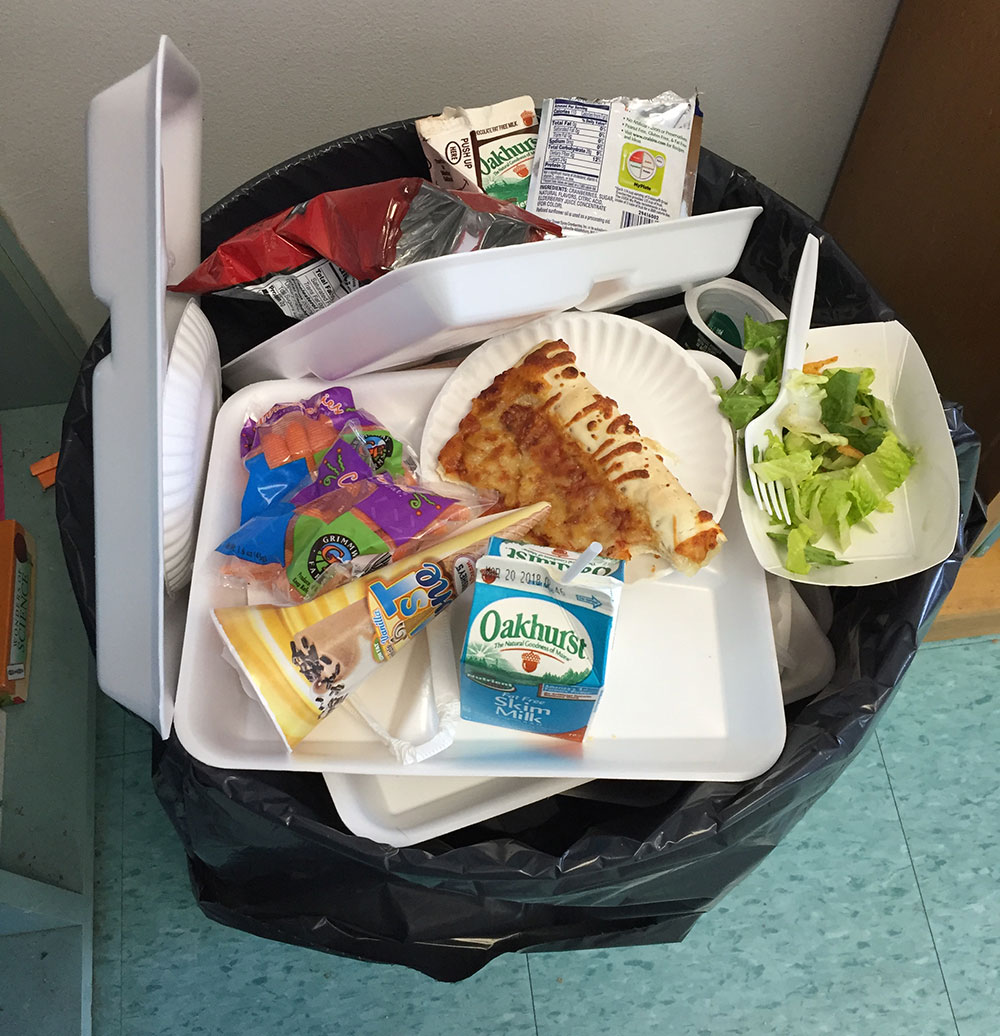Maine K-12 schools generate an estimated seven million pounds of food waste annually (1). That is a staggering amount for our small state, and it reflects the larger, global food waste problem. At home, almost one-third of the garbage Mainers throw out is food waste and scraps. Meanwhile, one in five Maine kids may not have a reliable supply of healthful food. Nationally, 40 percent of the food we produce does not get eaten. All of these numbers represent missed opportunities, and for schools those opportunities include maximizing student potential by feeding hungry students, saving money, and protecting our natural resources.

Food being thrown away in the trash can before the Hall-Dale Environmental Club began their food waste project.
Today’s students are tomorrow’s food decision makers. While schools generate a comparatively small portion of our nation’s food waste—between one and two percent—taking action in schools can have a large impact in solving the problem. Soon, today’s students will be making their own food and restaurant choices, doing their own grocery shopping, and cooking their own meals. Schools are uniquely positioned to help change the culture around food waste to a more efficient and resourceful use of food. This “Yankee thrift” is a Maine tradition and carries on the values of our parents and grandparents. If we involve kids in helping to solve the food waste problem, they can pass what they learn on to the next generation.
It is important to tackle our food waste problem for many reasons, including environmental, social, and economic ones. By addressing food waste in schools, we can seize opportunities to:
- Help Kids Do Better in School. Focusing is hard on an empty stomach. Ensuring kids have enough healthy food to eat can improve their behavior and help them concentrate on their schoolwork. Unfortunately, kids are missing meals for a variety of reasons, making them unprepared when the bell rings. School food waste reduction programs can address this problem, and help students maximize their potential.
- Save Your School Money. Reducing food waste can save schools money by avoiding wasted food and the higher disposal fees associated with it. Food waste is roughly 80 percent water and water weighs about eight pounds per gallon. In the Northeast, landfill fees average $78 per ton. It is easy to see how quickly these disposal fees can add up. Reducing food waste can free up funds that would be better spent educating Maine students.
- Conserve Natural Resources. Our kids are inheriting an increasingly crowded world, and there is no guarantee that the natural resources we take for granted today will be available for our kids tomorrow. When food is wasted, so is the land, air, water, and energy used to produce, transport, and ultimately dispose of this food. Food waste collection programs get kids involved in solutions to this global problem. Kids can actively learn about the important relationship between their food choices and how they affect the natural resources that everyone depends on.
Whether you’re an administrator, teacher, custodian, cook, parent volunteer, or student, we all have a role to play in reducing food waste. Check out NRCM’s School Food Recovery Handbook to get an inside look at the choices schools have for changing their food waste practices, how school food recovery programs work, and importantly, how to engage students so that they become part of the solution to our global problems. We’ve found that people usually agree that uneaten food should be redistributed and used constructively instead of tossed in the trash. Where they get stuck is how to solve the problem. The Handbook will help your school overcome hurdles and reach its goals.










